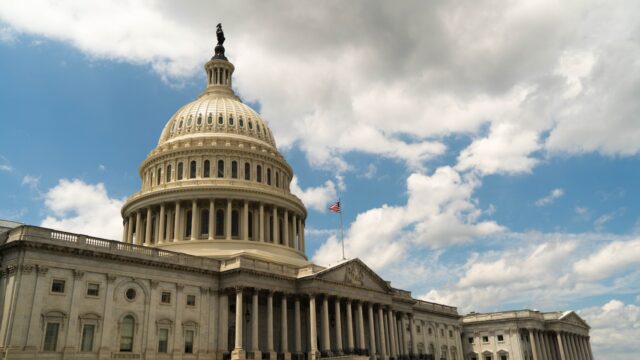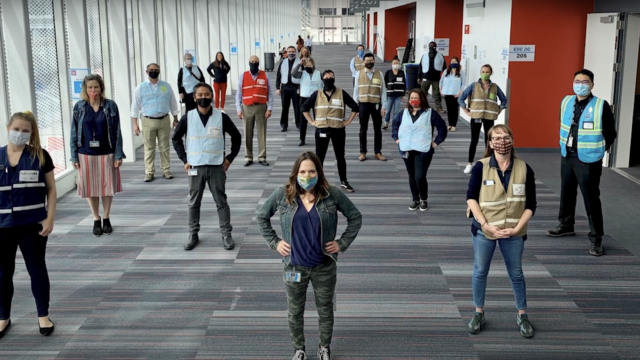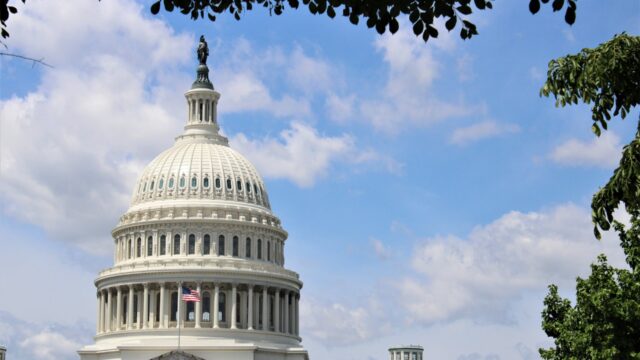Modernizing the public health system requires sustained, increased funding to CDC
October 2023

The Big Cities Health Coalition has responded to a Request for Information (RFI) from Dr. Bill Cassidy (R-LA) regarding the Centers for Disease Control and Prevention (CDC). BCHC emphasizes that a well-functioning health system and emergency response require a whole-of-government approach.
Fostering Innovation and Collaboration
Creating a Culture of Innovation
A critical piece of the Moving Forward work has been to think about how the agency needs to change and adapt to be more nimble, less siloed, and more proactive. Further, it is important to remember that CDC sits within Health and Human Services (HHS), a huge department with its own set of priorities, which can limit the agency’s ability to truly create such a culture.
Making Data Work for Everyone
Public Health Data
To provide a nationwide perspective of disease burden, state, tribal, local, and territorial (STLT) health departments share de-identified data that has been organized and linked with investigation and response information, with CDC, which ultimately informs national public health responses, resource allocation, prevention initiatives, and policy. STLT health departments have the legal responsibility and authority to protect people living within their jurisdictions; they need timely data to respond immediately, efficiently and effectively “on the ground.” Investment in system modernization at the STLT level is essential to support this flow of public health data and ensure the rapid delivery of health care data to public health.
CDC’s Data Modernization Initiative
Public health data and surveillance systems must live beyond COVID-19 and be ready for any and all future threats. This requires long-term, sustained investment to build capacity not just at the federal and state level, but also at health departments in cities and counties across the country. BCHC and our partners in the Data: Elemental to Health campaign, support a robust and sustained federal investment in public health data modernization at CDC and to STLT health departments. Investing in DMI, which the coalition estimates will cost $7.84 billion at the STLT levels in five core pillars over five years, is the key to improving our public health data infrastructure. As a start, Congress should appropriate at least $160 million for DMI in fiscal year (FY) 2024 and commit to making a larger long-term investment as soon as possible.
DMI will help to break down silos and ensure that all systems are secure and interoperable, thus allowing STLT public health authorities to more efficiently use data for public health action and to communicate data to CDC. Underfunding DMI limits what CDC can allocate to jurisdictions and will hinder our ability to make improvements and incorporate evolving technology. STLT health departments are the front line of our nation’s public health system and all disease detection and response efforts rely largely on federal funds, with states contributing an average of only 12%. Likewise, few federal dollars have gotten to local health departments across the country to increase their data capacity.
Federal Data Authority
BCHC also supports the Improving Data Accessibility Through Advancements in Public Health Act or Improving DATA in Public Health Act (H.R. 3791) that promotes coordination between federal agencies to share critical public health data used to prepare for and respond to public health emergencies.
BCHC believes giving CDC the authority to effectively collect and coordinate public health data is necessary to serve its mission and address known blind spots. Expanded data authority for CDC will allow for more complete and timely data sharing to support decisions at the federal, state, and local levels, while also reducing burden on providers.
Electronic health record (EHR) data and CDC’s data modernization
Efficient use of EHR data is critical to DMI efforts. Additional funding is needed to support STLTs’ capacity to be able to implement eCR with all providers in the jurisdiction and to ensure rapid delivery of the correct information to the national level.
CDC’s Center for Forecasting and Outbreak Analytics
BCHC believes the advanced analytics for disease forecasting and modeling will be an important resource for our members. Sustained funding is required to maintain the center’s functionality over time.
Public Use of Data
We recommend that STLT health departments are given the opportunity to review and preview the data prior to its release to the public. CDC could invest in an “STLT view-only” pre-published prototype site that would allow STLT health departments to review the data to address potential gaps, anomalies, prepare for a coordinated response, as well as monitor data sharing of ongoing outbreaks.
Improving Upon What Works Well
State, Tribal, Local, and Territorial (STLT) Relationships
The tripartite governmental public health system – federal, state, and local – is essential to ensuring the health and safety of communities. These relationships can be better supported through transparent communication and consultation, sharing of data at all levels, and robust, predictable funding. Explicit authority to direct funding to governmental agencies at all levels of government is needed.
Congress should also include the following strategies to reduce administrative burdens on STLT public health agencies for non-emergency federal funds:
- Multi-year funding awards with 24-month budget periods and the ability to redirect funds during the budget period. This would reduce the administrative burden of processing carryover and no-cost extension requests.
- Notwithstanding existing provisions, formally allow STLT public health staff funded through any federal categorical cooperative agreements and grants to adopt federal teleworking rules and standards with approval from the STLT public health authority.
Epidemiology and Laboratory Capacity Cooperative Agreement (ELC) Program
Disease specific funding bolsters the ELC program by directly supporting capacity within the specific program areas; however, this funding is tied to a specific disease category and cannot easily be reassigned when a new threat emerges. Increased funding across National Center for Emerging and Zoonotic Infectious Diseases programs will allow for an increase in funding available to STLT health departments through the ELC mechanism and it must be coupled with an increase in the foundational ELC program line—which has not been increased from $40 million since 2011. ELC dollars should be directly sent to big city health jurisdictions so they can support local epi and lab capacity. While federal funds supported more than 90% of state epidemiologists (both in annual appropriations and COVID supplementals) in 2021, they only accounted for about 60% of the staff costs for local epis.
Mechanisms to Modernize
Workforce
We need to invest in a long term, well-funded, well-trained, and diverse health workforce that is reflective of the community and employed by, or detailed long term to, local health departments. This will take sustained and predictable federal funding to create and support jobs that can support core public health functions, work across health department programs (as opposed to being tied exclusively to siloed disease-specific programs), and support the foundational capabilities of health departments, including assessment and surveillance and access and linkage to health care.
CDC Foundation
BCHC supports the CDC Foundation as a partner to CDC and to local and state health departments.
Read the full document
Download now Read the full document

